It is a type of agriculture sector where plants are grown in water. This method requires less water and land and can be done indoors, making it ideal for countries like Brazil with limited resources. Brazil is currently the world’s largest producer of hydroponic lettuce, with an impressive 70% market share.
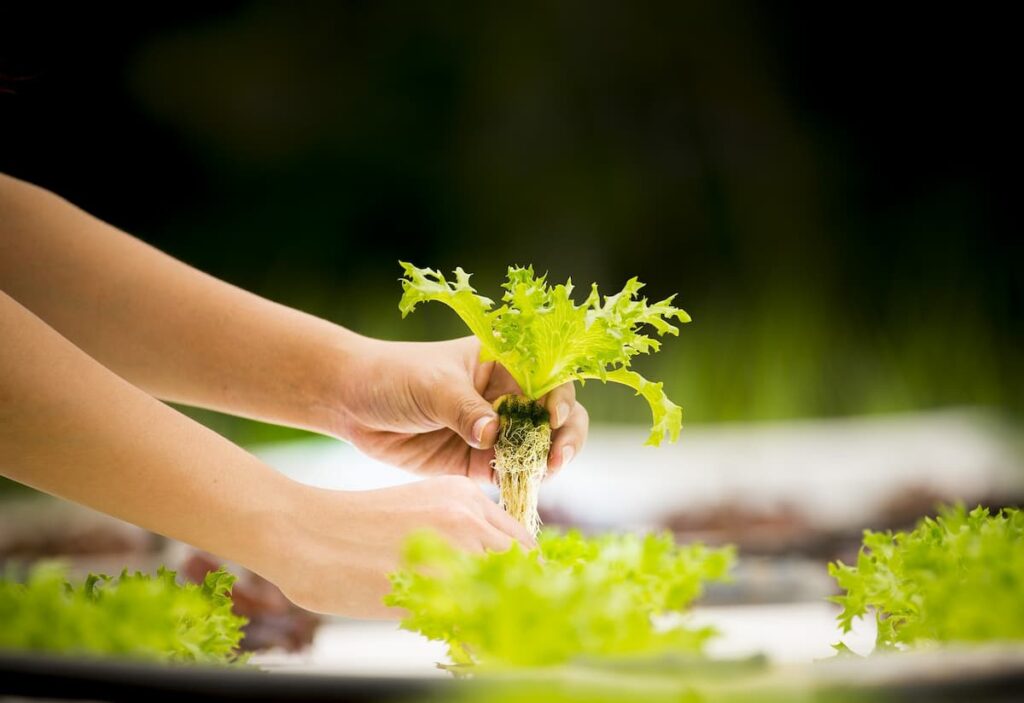
How to start hydroponic farming in Brazil
Hydroponic vegetable production in Brazil
Hydroponic vegetable production in Brazil is an activity that has increased fast during the last few years. Today it is estimated that the total soilless area is around 50 hectares. The main production system is the NFT; the most important crops are lettuce, arugula, and watercress.
What is hydroponic farming?
This method of farming has many benefits, including the fact that it requires less water than traditional farming methods. Also, hydroponic farms can be located in areas that do not have access to fertile land. In recent years, the popularity of hydroponic farms has grown exponentially as more people have become interested in sustainable and efficient ways of growing food.
How to start and set up your hydroponic farming in Brazil?
If you’re interested in starting your hydroponic farm in Brazil, there are a few things you need to know. First, you’ll need to choose a location for your farm. Finding a spot that gets sunlight and has good drainage is important. Once you’ve selected a location, you’ll need to set up your grow beds. There are various grow beds, but the most common type used in hydroponic farming is the flood and drain system.
To start a flood and drain hydroponic system, you’ll need to build or purchase a grow bed, install an overflow drain, and connect it to a water source. After your grow beds are set up, it’s time to start planting! When selecting plants for your hydroponic farm, it’s important to choose varieties that are well-suited for growing in water. Some popular options include Lettuce, Tomatoes, Cucumbers, and herbs.
Once your plants are in place, you’ll need to monitor them closely to ensure they get enough water and nutrients. Most hydroponic farms use automated systems to deliver these things to the plants, but if you’re starting, you may want to do it manually until you get the hang of things. You can easily start your hydroponic farm in Brazil with some planning and effort.
How is hydroponic farming done in Brazil?
Hydroponic farming in Brazil is done by first preparing the hydroponic system. The system consists of a grow bed, a water reservoir, and a pump. The grow bed is filled with media such as gravel, perlite, or coconut coir. The plants are then placed in the grow bed, and the roots are submerged in nutrient-rich water.
The pump circulates the water and nutrients to the plants, and the roots absorb what they need. The excess water and nutrients are returned to the reservoir, where the plants recycle them. This closed-loop system ensures the plants get everything they need without wasting resources.
In case you missed it: Top Agricultural Universities in Brazil: Best List
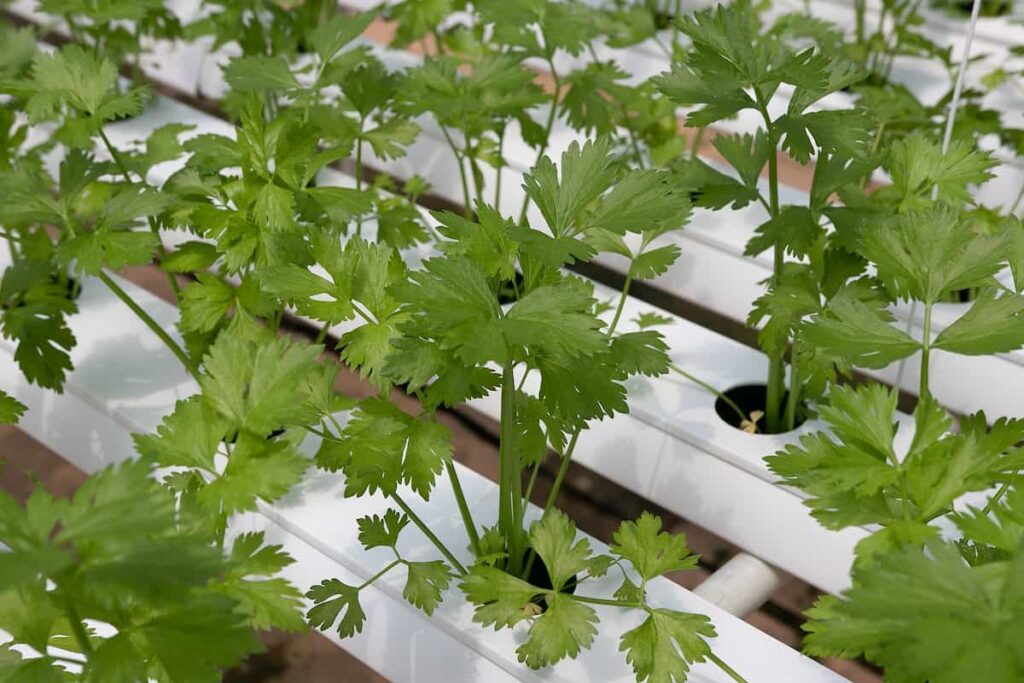
Hydroponic farming at home in Brazil
- Brazil has a tropical climate, which is ideal for hydroponic farming. In addition, Brazil has a large population and a growing demand for fresh produce. As a result, hydroponic farms are becoming increasingly popular in Brazil.
- There has been a growing interest in commercial hydroponic farming in Brazil recently. This agriculture offers several advantages, including lower water usage, reduced fertilizer requirements, and higher yields.
- Several companies are already involved in commercial hydroponic farming in Brazil. These businesses are typically large-scale operations that use sophisticated equipment and techniques.
- The Brazilian government has also supported this type of agriculture, helping to fund research and development efforts. In addition, the government has created an online portal that provides information about hydroponic farming in Brazil. With its favorable climate and ample land resources, Brazil is well-positioned to become a major player in the global hydroponic market.
Commercial hydroponic farming in Brazil
Brazil is the world’s second-largest producer of fruits and vegetables, and its agricultural sector is responsible for 10% of its GDP. However, traditional farming methods are not well suited to the country’s climate and soil conditions, so yield levels are often low. In recent years, commercial hydroponic farming has emerged as a viable alternative to traditional agriculture in Brazil. Hydroponic farms use a soilless growing medium and rely on a carefully controlled mixture of nutrients and water to support plant growth.
This type of farming can be done in greenhouses or other controlled environments, which makes it ideal for countries like Brazil with tropical climates. Commercial hydroponic farms in Brazil produce high-quality fruits and vegetables for the domestic market and export. In addition to being more productive than traditional farms, hydroponic farms use less water and land, and they can be located near urban areas where there is strong demand for fresh produce.
Steps to start hydroponic farming in Brazil
- In a hydroponic system, plants are grown in water.
- Brazil has a tropical climate ideal for hydroponic farming.
- There are many types of hydroponic systems, but the most common one used in Brazil is the Nutrient Film Technique (NFT).
- To start a hydroponic farm in Brazil, you must obtain a license from the Brazilian Institute of Environment and Renewable Natural Resources.
- You will also need to find a suitable location for your farm. The site should have access to sunlight and water.
- Once you have obtained the necessary licenses and found a suitable location, you can begin setting up your hydroponic system.
- After your system is set up, you can plant your crops. Most vegetables and fruits can be grown using hydroponics.
- Harvesting your crops is done when they are fully grown and ready to be eaten or sold.
In case you missed it: How To Buy Agricultural Land In Brazil & Who Can
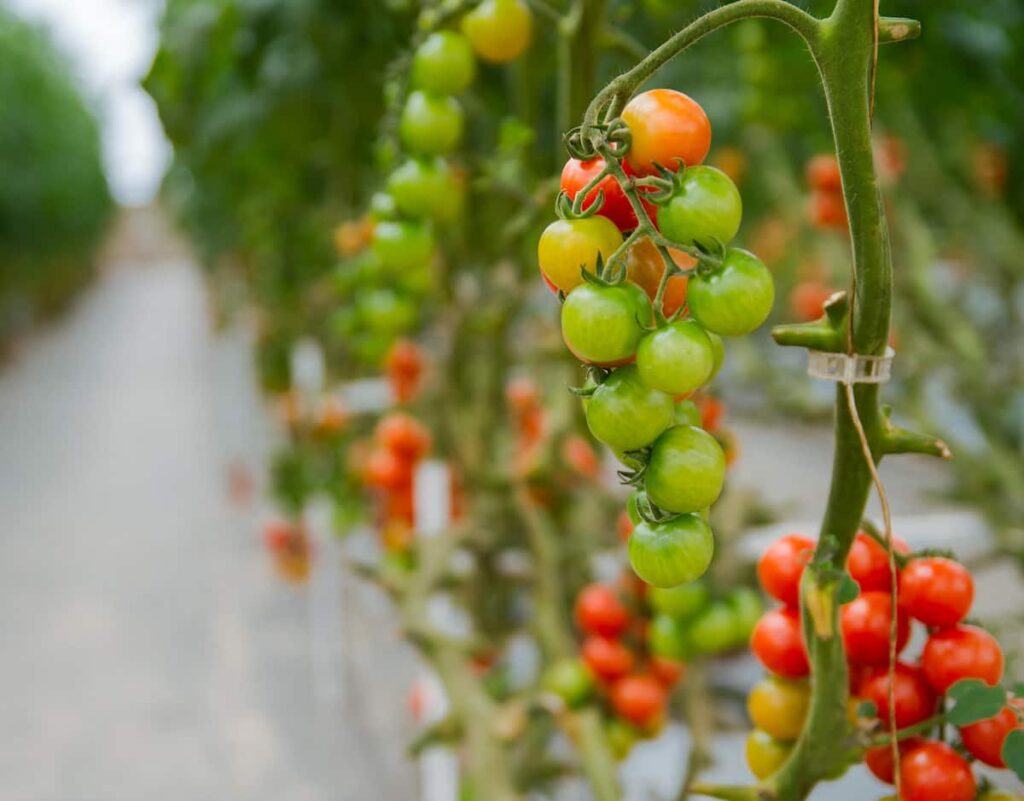
Hydroponic farming business plan in Brazil
- Brazil is the world’s second-largest producer of fruits and vegetables, and the country’s hydroponic farming sector is growing rapidly. A hydroponic farming business plan can be a great way to get started in this exciting industry.
- There are many reasons to start a hydroponic farming business in Brazil. The country has a large population with a growing appetite for fresh, healthy produce. Additionally, Brazil has a favorable climate for year-round crop production. And finally, there is a growing demand for organic and locally-grown produce.
- A hydroponic farming business plan should take into account all of these factors. The first step is to select a location. Brazil has many regions with ideal climates for hydroponic farming, so it’s important to select an area that will allow you to produce the type of crops you want to grow.
- Once you’ve selected your location, you’ll need to put together a team of experienced professionals to help you get started. This team should include an agricultural engineer, a business manager, and someone with experience in hydroponic systems. With their help, you can develop a comprehensive business plan that considers all the necessary factors for success.
Crops suitable for hydroponics in Brazil
Many crops can be grown hydroponically in Brazil, including but not limited to: Tomatoes, Cucumbers, Peppers, Lettuce, and herbs. Hydroponic farming can be done on a small scale at home or on a large scale in commercial greenhouses. Brazil is the world’s leading agricultural nation, with a strong export focus.
Different types of hydroponic systems in Brazil
Brazil has three main hydroponic systems: the Ebb and Flow system, the NFT system, and the Drip system.
- The NFT system is the most common type of hydroponic system in Brazil. In this system, plants are grown in a thin layer of nutrient solution constantly flowing past their roots. This system is very efficient and can be used to grow various crops.
- The Drip system is another popular type of hydroponic system in Brazil. In this system, plants are grown in pots or trays placed on a draining table. A nutrient solution is a drip fed to the plants regularly. This system is less labor-intensive than the NFT system and is often used to grow smaller crops such as herbs and lettuce.
- The Ebb and Flow system is the third type of hydroponic system in use in Brazil. In this system, plants are grown in pots or trays placed on a table that floods and drains on a regular cycle. A nutrient solution is pumped into the table and allowed to flood the roots of the plants before draining away again. This type of hydroponic system is very versatile and can grow various crops.
In case you missed it: How to Start Dairy Farming in Brazil: Business Plan, Breeds, Profits, and Loans
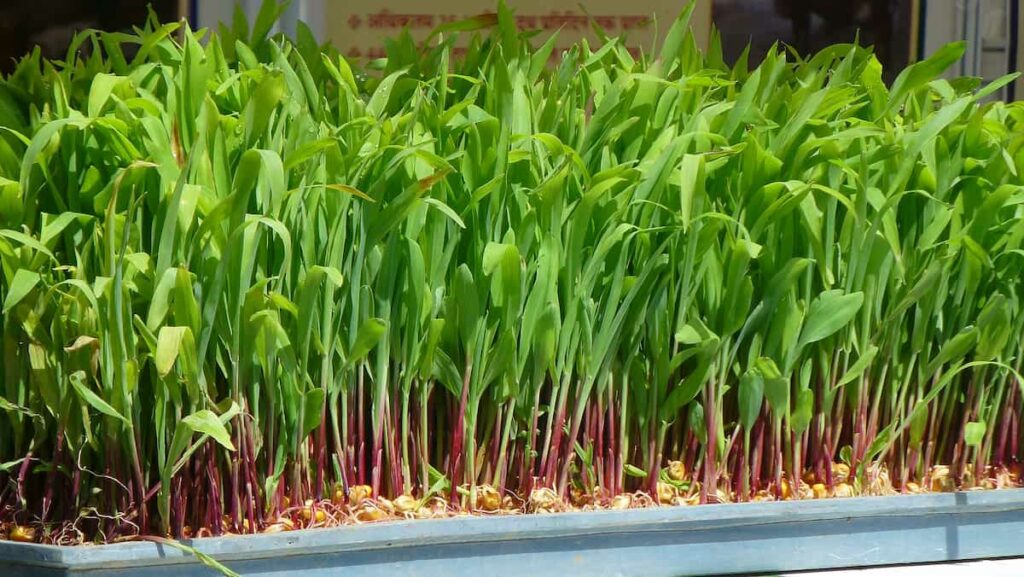
Hydroponic farming setup requirements in Brazil
Brazil’s humid, subtropical climate is well suited for hydroponic farming. There are a few key requirements for setting up a successful hydroponic farm in Brazil:
Adequate water supply
Brazil has abundant freshwater resources, making it ideal for hydroponic farming. However, it is important to have a reliable water source that can provide the necessary water for your farm.
Ample sunlight
Brazil is sunny, with plenty of sunlight available year-round. This is ideal for growing plants in a hydroponic system.
Stable temperature
The temperature in Brazil remains fairly stable throughout the year, which is ideal for hydroponic farming.
Access to nutrients
To ensure healthy plant growth, it is important to have access to essential nutrients. These can be sourced from local suppliers or online retailers.
Ventilation and air circulation
Good ventilation and air circulation are essential for any indoor farming, especially for hydroponic systems.
How is hydroponic farming done in Brazil?
- There are a few key steps to hydroponic farming in Brazil. First, you need to set up a water reservoir. This can be done by drilling a hole in the ground and lining it with a liner. Then, you need to fill the reservoir with water and add a growing medium, such as sand or gravel.
- Next, you will need to add plants to the system. You can place them in net pots or grow bags filled with the growing medium. Be sure to leave space between the plants so that they can get adequate airflow and light.
- Once the plants are in place, you must monitor the system closely. This includes checking the pH of the water and adjusting it as needed, monitoring the nutrient levels, and adding more if necessary.
Hydroponic farming subsidy in Brazil
The Brazilian government offers a subsidy for hydroponic farming, which makes it an attractive option for farmers in the country. The subsidy is available for small- and large-scale operations, making it accessible to all farmers. The subsidy amount varies depending on the size of the farm, but it can be as much as 50% of the total investment. This makes hydroponic farming a very appealing option for farmers in Brazil.
In case you missed it: How to Start Goat Farming in Brazil: Rearing Business Plan, Breeds, and Management
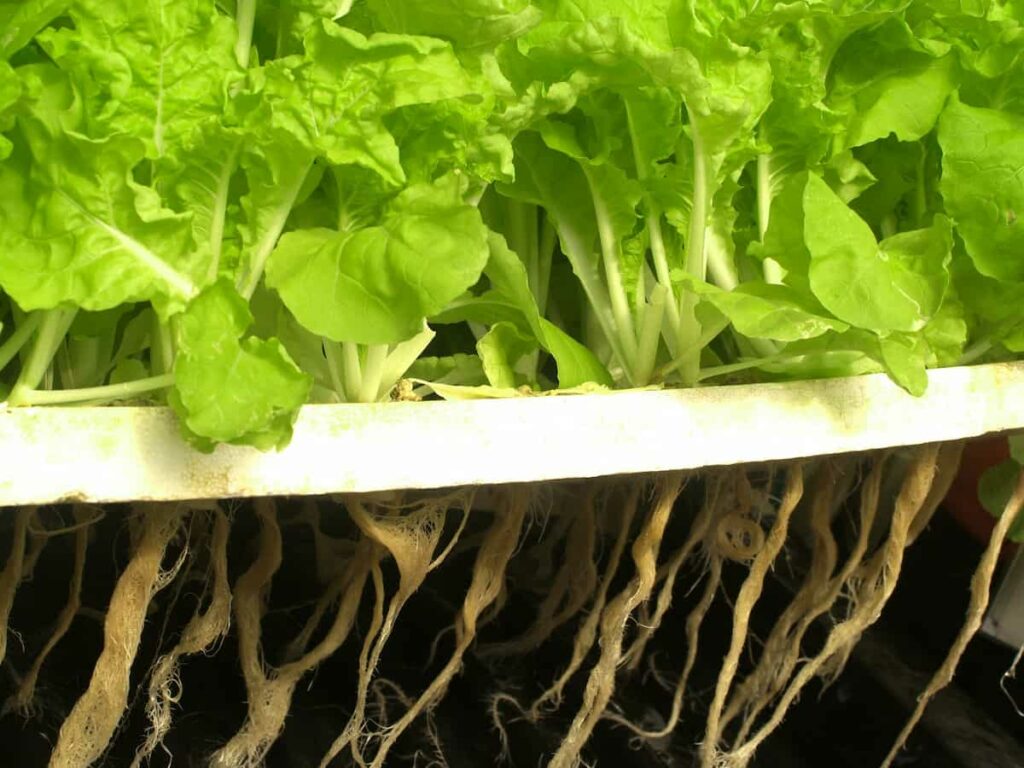
Choose the suitable hydroponics media in Brazil
Various hydroponics media are available on the market, each growing media with its benefits. When choosing a hydroponics media for your farm in Brazil, it is important to consider the climate and conditions of your growing area. Hydroponic farms in Brazil are often located in humid, tropical regions with high temperatures and ample rainfall.
In these conditions, choosing a hydroponics media that will not break down or decompose quickly is important. Several types of Rockwool and clay pellets are available that are designed for use in humid, tropical climates. These media will provide good drainage and aeration while resisting decomposition.
Hydroponic farming problems in Brazil
A few issues have been identified with hydroponic farming in Brazil. The first is the lack of reliable water supplies. This can be an issue in rural and urban areas, as farmers often rely on rainwater collected in reservoirs. This can lead to drought conditions, as well as problems with water quality. In addition, there is a lack of trained personnel to operate and maintain hydroponic farms.
This can be a major issue in remote areas, where farmers may not have access to trained technicians. There is also a lack of technical support from government institutions and private companies specializing in hydroponics. Finally, there is a limited market for hydroponically grown crops in Brazil. Most consumers are still unfamiliar with hydroponics and unwilling to pay premium prices for these products. In addition, there is stiff competition from traditional farmers who can sell their products at lower prices.
Hydroponic farming challenges in Brazil
The main challenge facing hydroponic farmers in Brazil is the lack of access to quality supplies and equipment. This is because most of the suppliers are located in urban areas, making it difficult for rural farmers to access them. Another challenge is the high cost of these supplies and equipment, which makes it difficult for small-scale farmers to afford them. Additionally, hydroponic farming requires a lot of water, a scarce resource in many parts of Brazil.
Another challenge of hydroponic farming is the high initial investment. Hydroponic systems can be expensive and require specialized equipment and knowledge. There is also a risk that crops may fail if the system is not managed correctly. Another challenge is that hydroponic farms often require more labor than traditional farms. The plants must be carefully monitored and cared for, and the nutrient solution must be regularly refreshed.
This can make hydroponic farming a more time-intensive endeavor than other types of agriculture. Despite these challenges, hydroponic farming offers many advantages. It is a sustainable and efficient way to produce food and can be done in any climate or location. With proper management, hydroponic farms can successfully provide fresh, nutritious food for people worldwide.
In case you missed it: How to Start Sheep Farming in Brazil: Breeds, Business Plan, Challenges, and Management
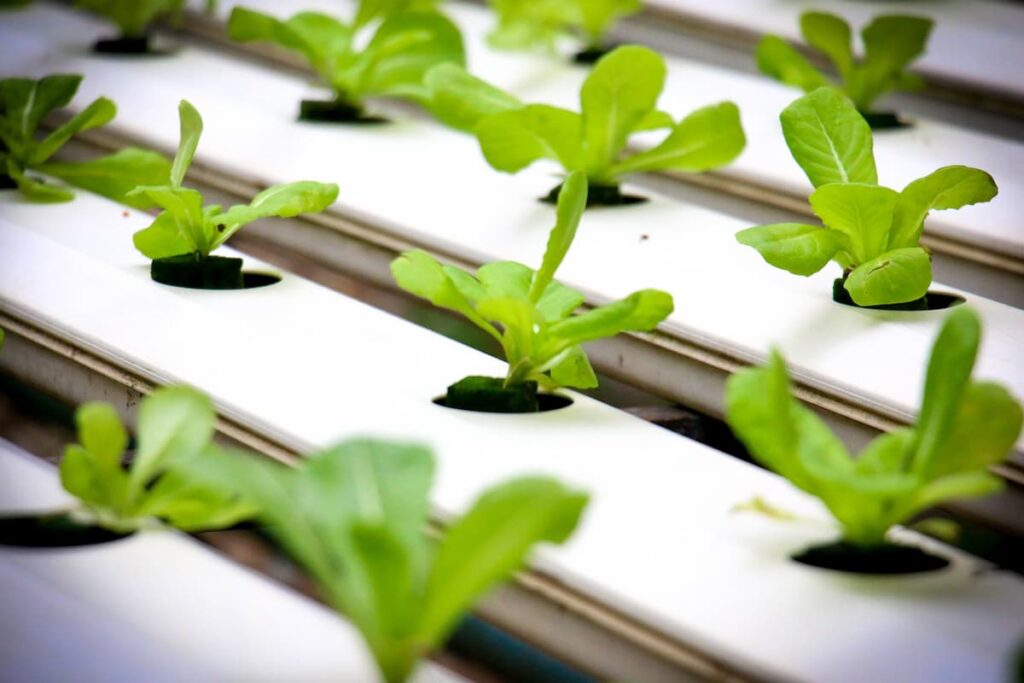
The future of hydroponic farming in Brazil
The future of hydroponic farming in Brazil is looking very promising. The country has a lot of potential for this type of agriculture, and many farmers are already successfully using it. There are a few factors that make hydroponic farming in Brazil so promising:
- The climate is ideal for hydroponic farming – Brazil has a tropical climate, which is perfect for growing plants without soil. Additionally, the country has abundant water resources, which is necessary for this type of agriculture.
- There is a large demand for fresh produce – Brazil has a rapidly growing population, and with it comes a growing demand for fresh fruits and vegetables. Hydroponic farms can provide these products year-round and are often more affordable than traditional farms.
- Brazilian farmers are innovative – Brazilian farmers have been quick to adopt new technologies and methods, such as hydroponic farming. They are always looking for ways to improve their operations and increase their yields.
These factors make it clear that the future of hydroponic farming in Brazil is very bright. This type of agriculture has the potential to greatly improve the country’s food security and provide fresh, healthy produce to its citizens.
Conclusion
Brazil is home to many hydroponic farms, which produce a variety of fruits and vegetables. The country’s climate is well-suited for this type of agriculture, and Brazilians have been using hydroponics for farming for centuries. As a result, hydroponic farming is an excellent way to produce fresh, healthy food at home. Anyone can start a hydroponic farm in Brazil with a little planning and effort.
- Types of Pesticides Used in Agriculture: A Beginner’s Guide
- Economical Aquaculture: A Guide to Low-Budget Fish Farming
- 15 Common Planting Errors That Can Doom Your Fruit Trees
- How to Make Houseplants Bushy: Effective Tips and Ideas
- Innovative Strategies for Boosting Coconut Pollination and Yield
- Pollination Strategies for Maximum Pumpkin Yield
- The Complete Guide to Chicken Fattening: Strategies for Maximum Growth
- Natural Solutions for Tulip Problems: 100% Effective Remedies for Leaf and Bulb-Related Issues
- Revolutionizing Citrus Preservation: Towards a Healthier, Greener Future
- Natural Solutions for Peony Leaf and Flower Problems: 100% Effective Remedies
- Maximizing Profits with Avocado Contract Farming in India: A Comprehensive Guide
- Natural Solutions for Hydrangea Problems: 100% Effective Remedies for Leaf and Flowers
- The Ultimate Guide to Choosing the Perfect Foliage Friend: Bringing Life Indoors
- From Sunlight to Sustainability: 15 Ways to Use Solar Technology in Agriculture
- The Ultimate Guide to Dong Tao Chicken: Exploring from History to Raising
- The Eco-Friendly Makeover: How to Convert Your Unused Swimming Pool into a Fish Pond
- Mastering the Art of Delaware Chicken Farming: Essentials for Healthy Backyard Flocks
- 20 Best Homemade Fertilizers for Money Plant: DIY Recipes and Application Methods
- How to Craft a Comprehensive Free-Range Chicken Farming Business Plan
- Brighten Your Flock: Raising Easter Egger Chickens for Beauty and Bounty
- How to Optimize Your Poultry Egg Farm Business Plan with These Strategies
- Subsidy for Spirulina Cultivation: How Indian Government Schemes Encouraging Spirulina Farmers
- Ultimate Guide to Raising Dominique Chickens: Breeding, Feeding, Egg-Production, and Care
- Mastering the Art of Raising Jersey Giant Chickens: Care, Feeding, and More
- Ultimate Guide to Raising Legbar Chickens: Breeding, Farming Practices, Diet, Egg-Production
- How to Raise Welsummer Chickens: A Comprehensive Guide for Beginners
- How to Protect Indoor Plants in Winter: A Comprehensive Guide
- Ultimate Guide to Grow Bag Gardening: Tips, Tricks, and Planting Ideas for Urban Gardeners
- Guide to Lotus Cultivation: How to Propagate, Plant, Grow, Care, Cost, and Profit
- Agriculture Drone Subsidy Scheme: Government Kisan Subsidy, License, and How to Apply Online
- Ultimate Guide to Raising Araucana Chickens: Breed Profile, Farming Economics, Diet, and Care
- Bringing Hydroponics to Classroom: Importance, Benefits of Learning for School Students
- Ultimate Guide to Raising Polish Chickens: Breed Profile, Farming Economics, Diet, and Care
- Ultimate Guide to Raising Australorp Chickens: Profile, Farming Economics, Egg Production, Diet, and Care
- Silkie Chicken Farming: Raising Practices, Varieties, Egg Production, Diet, and Care
- Sussex Chicken Farming: Raising Practices, Varieties, Egg Production, Diet and Care